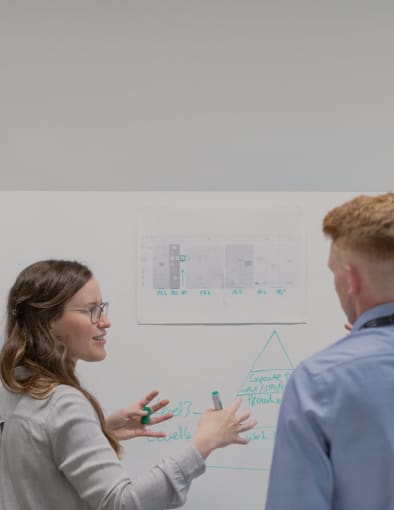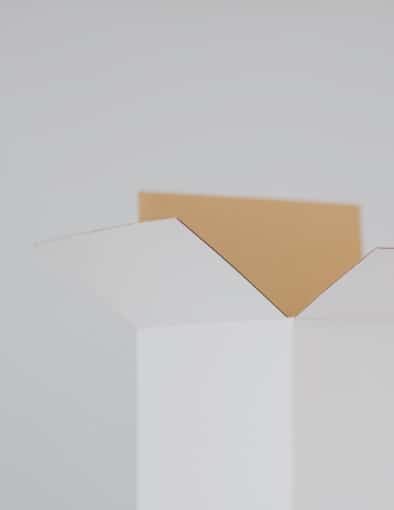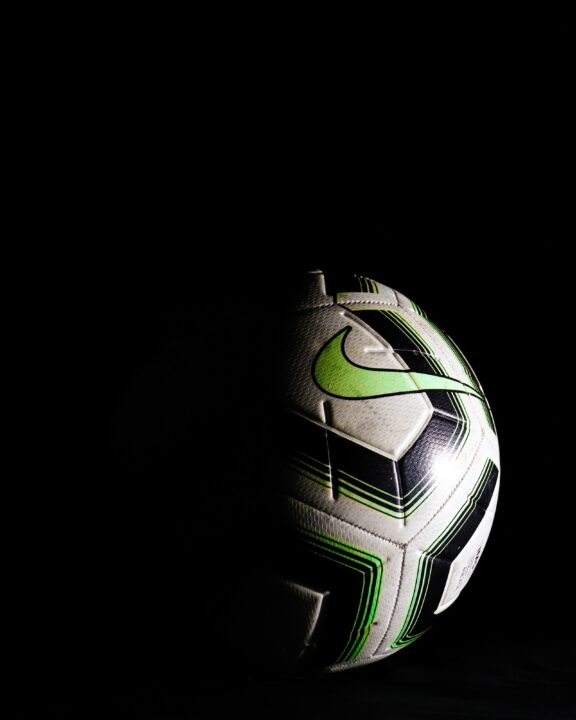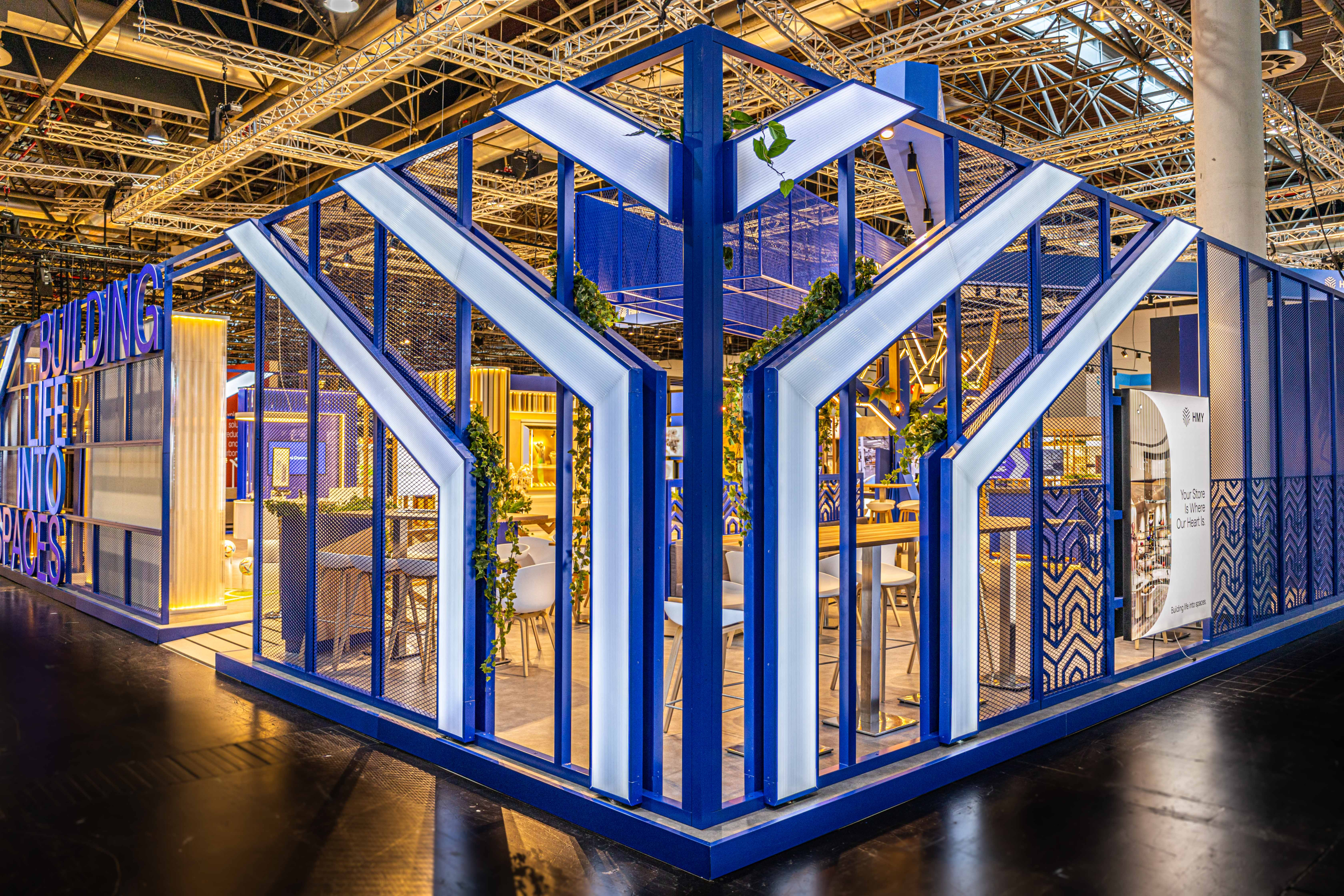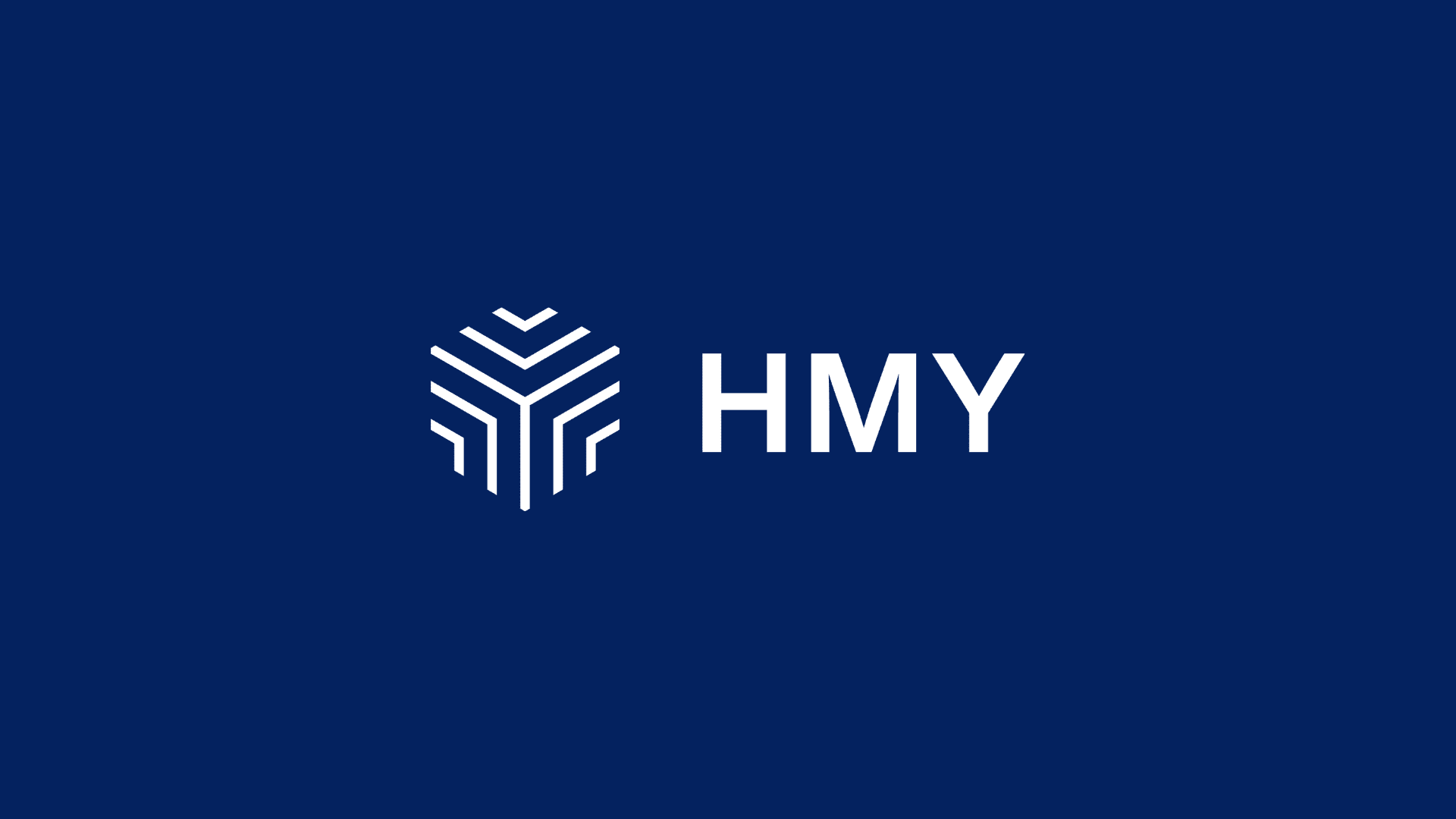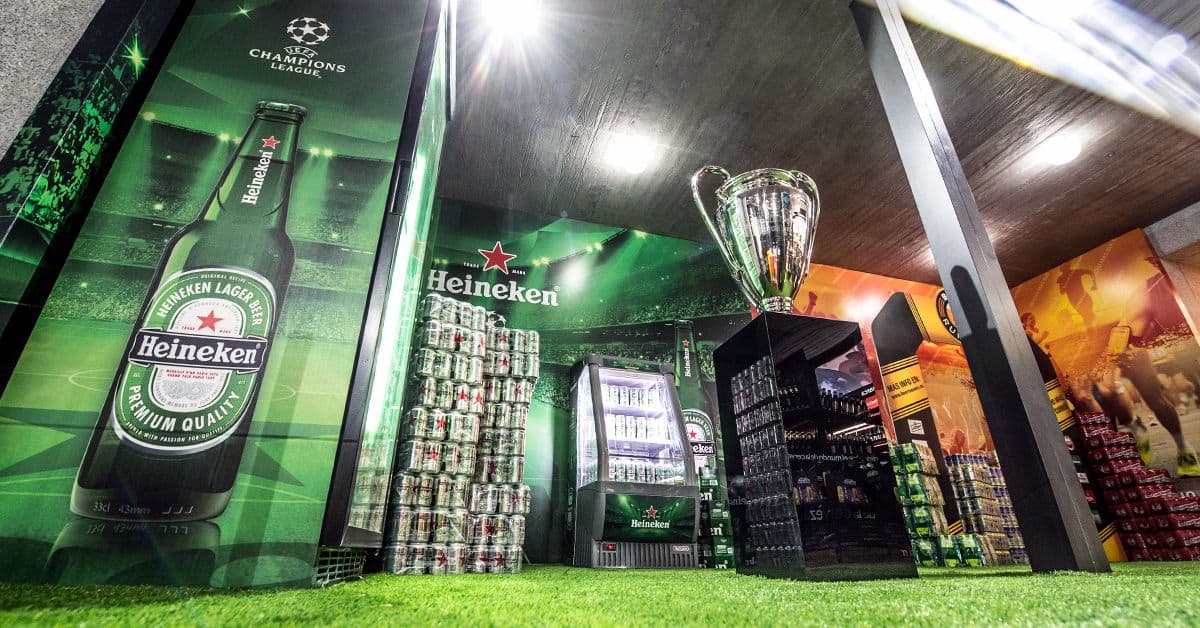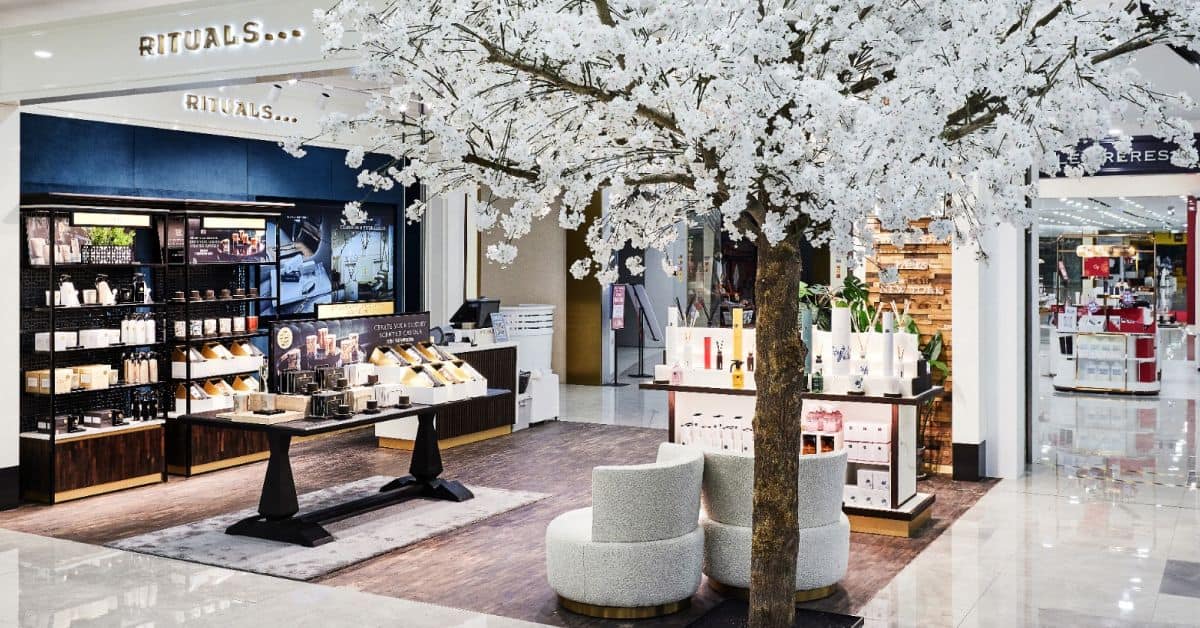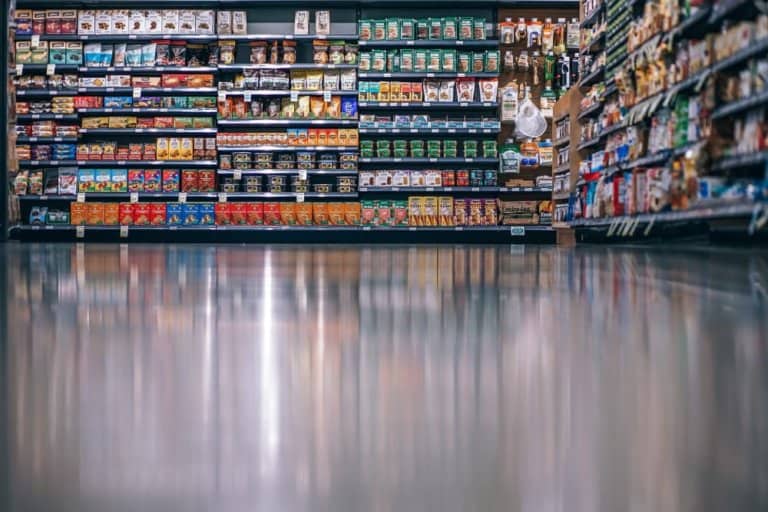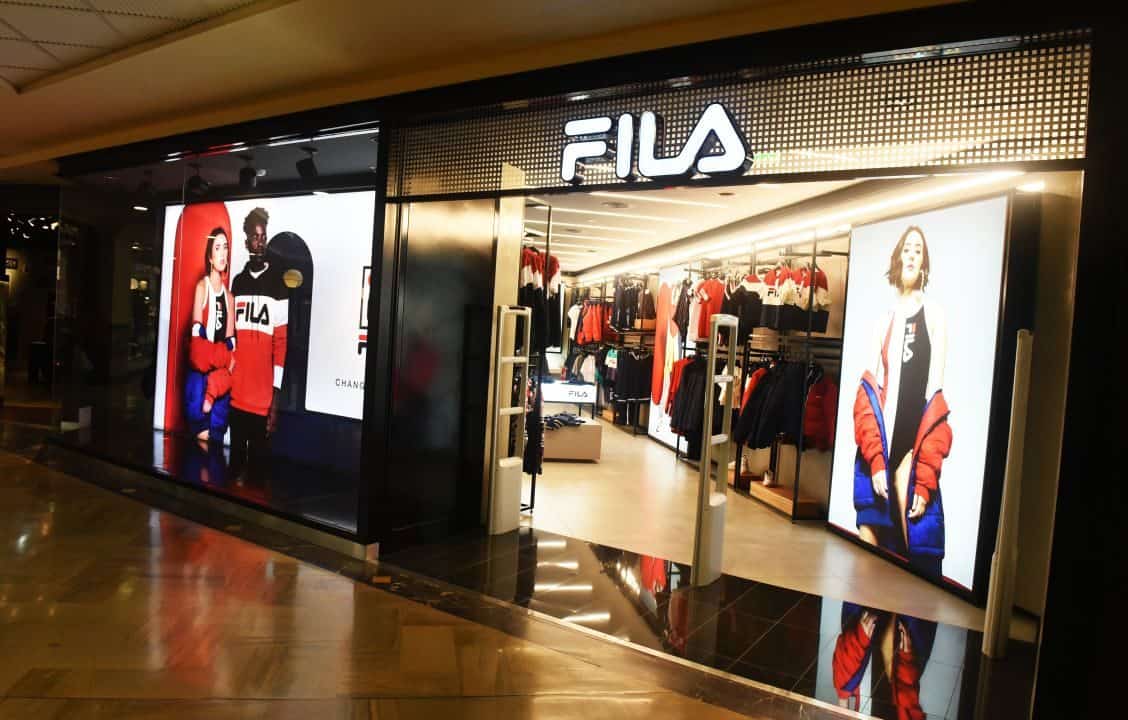Category: Shopfitting
How does Business Intelligence help retail?
It is popularly said that information is power, and having information about our business is the first step to sell more, satisfy our customers and improve results. But how do you get it? Maybe a piece of information, by itself, does not give us anything, so we must know how to analyse it and draw conclusions. That’s where Business Intelligence can help us.
Data collection has developed a lot in recent years. Nowadays it is possible to collect data from almost any device and this has made Big Data gain great popularity. We have a huge amount of data that we must now process to convert it into useful information for our business. This is where Business Intelligence springs up.
What is Business Intelligence?
Business Intelligence (BI) refers to the process of extracting information and knowledge of data through analysis. Its objective is to help make better decisions in the business environment, improving results and optimising processes.
Through this process we can analyse past and current data that allow us to draw conclusions that improve our business. In addition, Business Intelligence also makes it possible to analyse trends and interpret predictive models.
Business Inteligence in retail
Business Intelligence applied to retail allows you to identify friction points, optimise in-store navigation, test layouts before rollout, recognise specific areas to ensure that visualisation strategies are effective and well-managed, and understand where to find the opportunities in the store by visualising consumer behaviour.
In this respect, at HMY we help brands and retailers to understand their customers’ behaviour, in order to learn, test and improve performance in their physical stores. Through connected sensors integrated into the stores spaces and furniture, we capture data in real time such as traffic, time spent in different areas or the conversion into sales of certain products after launching digital campaigns.
What advantages does BI offer to the retail sector?
Applying Business Intelligence to our business offers many advantages that will help us generate more benefits and offer a better service. The most outstanding are:
Collecting data accurately
You can access accurate data in real time at anytime from anywhere. In addition, they can be compared by hour, day and month at store or region level, which allows understanding traffic, conversion rates and other metrics.
With all that information it is possible to take quick measurements in store with recommendations based on data trends, including traffic foreseen by AI, as well as evaluate performance against historical data, mirror stores and objectives.
Optimising the store’s resources
The benefits include improving engagement with the customer and optimising the staff by aligning their work hours with customer buying times.
Understanding your customers demographics
Data on audience profiles by age, gender, time of day, day of the week and store allows you to customise promotions, merchandising and inventory volume in real time.
Attracting customers to the store
Data make it possible to know the potential customers that pass by the store and come to enter compared to those who do not and the time they remain in it.
There are also various technological solutions that allow the customer to identify themselves in the store, which gives them access to personalised information and promotions that serve the retailer or the brand to analyse the frequency, time spent, visited areas and products purchased, among other things.
All this information is very useful to make decisions that attract customers to the point of sale.
Understanding the Shopping Journey
Through direction maps you can find out where customers walk from the entrance, where they stop, how long they stay in each area and all this helps to make decisions about the store’s design and what the best promotional spaces are.
Business Intelligence tools for retail
Business Intelligence provides several tools to the retail, among which the following are split into two main blocks:
Customer interaction analysis
Integrating technological solutions in the store makes it possible to improve customer experience through interaction with different solutions that may include tutorials, product queries and questionnaires, among others.
Some examples of indicators that can be measured are:
- Viewing products and services of greatest interest
- Requests for sizes that are out of stock
- Customer needs segmented depending on the type of customer
- Related services and products
- List of products segmented by customer type
- Calculating the technological solutions ROI before and during the roll out
Analysis of the customer’s general behaviour
This measures the buyer’s behaviour and patterns to optimise the location of the displays, signage, store design and layout, merchandising displays, product placement and accessories, among other things.
- Permanence ratio – measures the percentage of buyers who walk through a specific location compared to the store’s total traffic.
- Interest ratio – measures the number of buyers who are located in a specific area for more time than the predetermined and defined period.
- Interest time – measures the average time that buyers stay in a specific area of permanence.
- Conversion ratio by area – measures the percentage of buyers who stop in a specific area of permanence and then make a purchase of the product exhibited within that area.
- Direction maps – measure the direction in which buyers go after entering the store: left, centre or right.
- Heat maps – measure areas of high traffic, bottlenecks and unattended areas by identifying “hot” and/or “cold” areas with visual colour maps.
Information is key to making better decisions
We must bear in mind that these tools only facilitate access and visualisation of information, but decisions must be made by us. This is why the choice of KPIs is so important and the key to choosing them correctly is knowing the business well.
This knowledge and experience, together with the information provided by these systems, will allow us to build a business model that, beyond generating greater profits, will better understand customers and their interests.
What is a planogram? Benefits and types
Planograms are an essential element when planning the layout and interaction with the customer in any physical store. However, do you know what they are exactly?
What is a planogram?
A planogram is the graphic representation of the way in which a number of products will be placed and distributed in a certain area of the store, whether on a gondola, shelving, display, etc.
In this way, the customer will not only know what the physical layout of the store will be, but also how the products will be placed in each of the different areas.
Advantages of using a planogram in retail
Planograms are a very useful tool for trade marketing, since they provide multiple benefits. They enable you to quickly make different versions of how the products will be structured in sales spaces. Thanks to this, it is possible to plan the visual aspect of the shelves and gondolas, as well as to better forecast the stock and technical material that will be needed.
Maximise space
The use of planograms allows you to better plan space by optimising the different areas of our store. In addition, it allows us to better organise the layout of products and have more control of how each of them will be presented in our store before investing resources in physically making these changes.
In addition, the planogram can be converted into a negotiation tool with different brands and suppliers. That is to say, the space and place the products are placed are transformed into elements of great value for the brands, through which they allow the managers of the establishments to reach special and advantageous agreements for the store or distributor. It also allows them to give them a space in a certain area, create a feeling of ownership and offer them greater visibility, which undoubtedly is attractive to manufacturers.
Increase sales
Greater control and organisation translates into better sales, in addition to the savings implied by better stock management.
This control over the location and way of visualising the products in the retail outlet, accompanied by Business Intelligence, allows us to perform certain analyses that determine which positions or locations can boost the sales of a certain product.
This information is not only useful to boost sales of that particular product, but also allows us to create cross-selling strategies that help us generate greater profits for our business.
Planogram types
There are different types of planograms based on the way in which the products are displayed in it:
Text-based
These are the simplest planograms to make, but also the least intuitive and with which it is more complicated and slow to work. It consists of a document with boxes in which the product that will go in each space is indicated with its name.
Picture-based
This planogram is more complex as it not only details the location of the products, but also the way in which they are going to be exhibited.
Three-dimensional
This is the most complete planogram that allows you to visualise not only the location and outlay of the products, but also their quantity and the signage accompanying them. Being in 3D, these planograms are created to cover the layout of an entire department, making it possible to create an image that is very close to the final layout of that section of the store.
How do you make a planogram?
Normally, the creation of a planogram usually involves software created specifically for it, although it is also possible to create them with graphic design programs.
What should we keep in mind when creating a planogram?
Organisation
It is essential to organise products so that they can be easily located by consumers; therefore, we must group products into categories that are intuitive and recognisable.
Height
The height at which we are going to place our products is decisive to favouring their visibility. Products that are at eye level will be the first to be seen by consumers, while products in lower areas can attract children’s attention.
Cross-selling
A proper outlay of products can help us generate more sales by favouring cross-selling or complementary sales.
Conclusions: an essential tool for better management
The use of planograms to plan our spaces yields numerous benefits that should not be disregarded by retailers. Not only will it help us maximise our spaces and generate better sales, but it can be a very useful support for specialists in trade marketing and visual merchandising.
How can the Retail conversion rate be improved?
The conversion rate is a basic metric for any business, which of course also includes the retail business. It is an essential KPI for our business, so increasing the conversion rate is an objective we establish from year to year.
But what exactly do we mean when we talk about the conversion rate?
What is the conversion rate?
It is a metric which confirms the percentage of people who visit our sales outlet who actually buy something and so instead of visitors they become customers.
How is it calculated?
It is very easy to calculate: by dividing the total number of conversions by the total number of visitors.
How to improve the retail conversion rate
Now that we know what the conversion rate is, the objective is to improve it, because the higher it is, the greater the benefits we could achieve.
The importance of measuring traffic
What should we do to improve our conversion rate? The first step is simple, but it needs to be done properly. It involves counting the number of people, because if we don’t know how many people have visited our shop we won’t be able to calculate this metric.
To count the number of people who actually visit our sales outlet we will need a traffic tracking solution or “people counter” to provide us with this information. We will also need to control how many customers we have.
If we have a large number of visitors but very few customers we will need to make an in-depth analysis of the situation, which may be because our sales outlet is badly optimised, or because of an advertising campaign targeting the wrong people, etc.
What you don’t measure can’t be optimised, so it is essential for these data to be as precise as possible.
Technological solutions which help to measure traffic include people counters, wifi tracking and retail analytics.
The key lies in the analysis
The data obtained in our sales outlet, not only from traffic counters but also other information provided by business intelligence tools, will help us identify where there is room for improvement in our sales outlet: has an interruption in stock caused a loss of customers? are there products which do not generate sales? is there a shortage of sales personnel?
The information provided by these tools, together with customer surveys, will help us find the key to improving the conversion rate in our business.
Some Retail Analytics solutions not only analyse traffic, they also inform us about conversion into sales, as well as the products which sell the most. They also help us make conclusions based on data and not on guesswork which helps us to optimise the sales outlet’s resources.
Combining different solutions
To find out which solution is best suited to our objectives it is best to have access to personalised advice. Here in HMY we act as consultants for our customer to help them design the solutions which are best suited to their needs.
We create and test a prototype before the final roll out to make sure the solution meets expectations and a return on the investment is guaranteed.
And start all over again
We need to understand that the optimisation of a sales outlet is an ongoing, never-ending process. Each time we finish measuring, analysing, testing, we have the data we need to take decisions which will help us to improve.
Once these steps have been taken, we need to be brave and apply new strategies for our sales outlet to grow and our conversion rate to improve.
HMY, a leader in innovation for retail outlets, helps its customers to implement the best solution for each case. We have over 60 years experience helping brands and retailers to create effective and efficient sales outlets, and we operate in over 160 countries worldwide.
Digitalising promotional activity in store
For years now, the effectiveness of promotional animation has been well proven and, on occasion, it is essential to position and differentiate the product. It allows you to conquer the buyer, attract potential customers and even tilt the purchase decision to one side or the other while sharing the essence of the store and the brand.
Therefore, both retailers and brands have used it for such important moments as launching new products or reducing excess stock without demand. However, like everything else, it has to move with the times and, today, it must be digital and immersive to attract the consumer and provide a differential experience.
In line with this need, we have created the “Transparent Display”, a solution where the products are enhanced creating a storytelling around it.
Thus, for example, you can project the characteristics or functionalities of the product, a promotional animation or highlight a brand’s universe. In short, it makes it possible to transmit a digitalised storytelling, sublimating the product and managing to increase sales.
This all takes place inside a dark box which manages to differentiate the product we want to highlight.
In addition, this technology, like all those developed by HMY, can be adapted and integrated into any type of fixture or commercial format.
This is another step in our commitment to offer the consumer memorable shopping experiences through developing innovative and immersive digital products such as the “Transparent Display” which help our clients attract consumers to their points of sale.
Fila continues its expansion and revamping in Argentina
The prestigious sports brand FILA will begin an expansion process in Latin America where it will open 3 stores every year and at HMY we are prepared to accompany them throughout the design and conceptualisation process as we have done with the opening of its new Flagship Store.
Concept and design of the new FILA stores
This new flagship store, located on the second level of Unicenter Shopping in Buenos Aires, is therefore one of the brand’s most important spaces in the country.
For its design we have made use of visual communication and illuminated displays, among other elements, based on multimaterial manufacturing that combines traditional materials such as metal, acrylic and LED lighting, but also other premium materials such as Corian® and polished veneered wood.
Through this combination of materials and the chosen colours, we have sought to provide stores with a more urban style closer to the aesthetics of cities such as L.A., New York and Detroit with which their audience may identify more.
This new FILA store will feature a number of the brand’s classic and state-of-the-art models. The main highlights are its FW19 collection and the exclusive Disruptor 2 “Made in Italy” edition with only 3,000 of these trainers in existence in the world.
FILA’s expansion continues
After this new store in Argentina, FILA will continue its expansion process in Sao Paolo (Brazil). This new space in Buenos Aires thus becomes the foundation stone in this expansion process that will allow FILA to expand and gain a foothold in the region.
As a result of our ability to work in multiple countries, at HMY we provide “glocal” solutions that enable the brand to expand while maintaining the same aesthetics and consistency with which the public will have the same brand experience wherever they are.


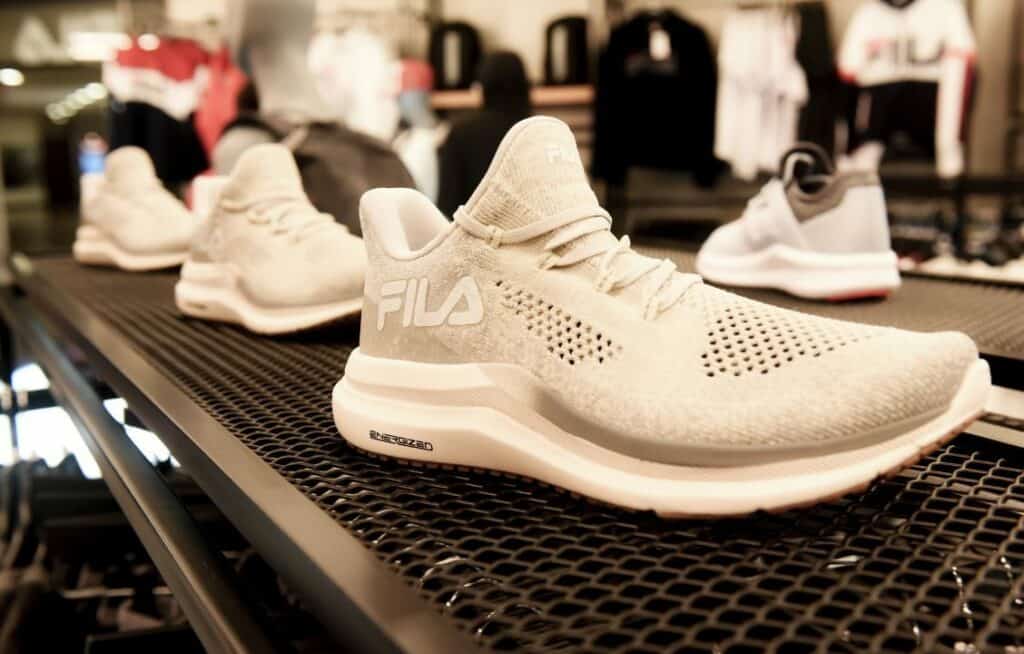
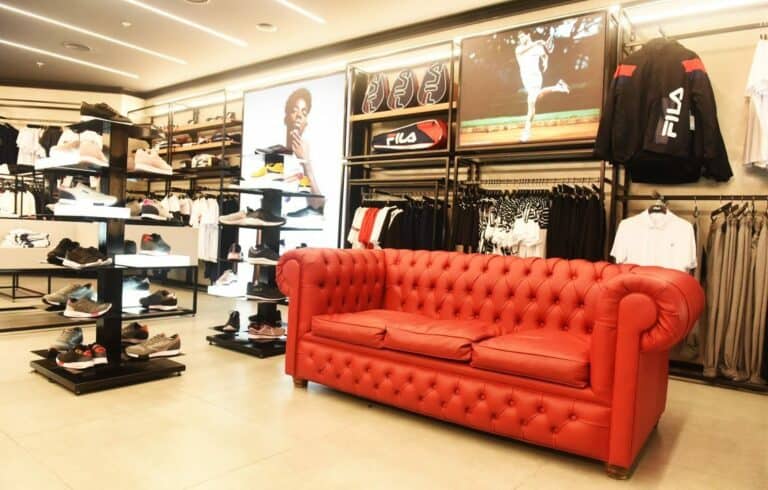






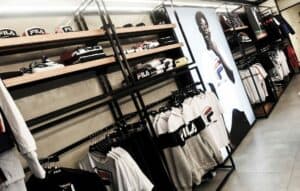
Scalpers grows and diversifies its business
Scalpers, a Spanish brand that was created as a fashion brand for men, recently launched its new Scalpers Woman line, with the aim of following the growth path and continuing to make inroads into new segments, as it did with children’s fashion.
After the great success with its men’s line, the brand has launched its women’s collection and has the support of HMY for its expansion, which began by developing two shop-in-shops in the Corte Inglés at Campo de las Naciones (Madrid) and Guadalajara.
Diversifying the brand while maintaining its essence
One of Scalpers’ main challenges, which we took on as our own, was to maintain the brand’s essence. The brand was created for men and this had to be transferred to a female audience; not only in terms of the collections, but also the sales spaces.
When designing these shops-in-shops we have worked on a concept that allows us to identify the brand, but also to bring it closer to its new target market with its women’s collection.
HMY consequently had the challenge of adapting the new brand manual to retail. To do this we have refined the look & feel, appealing to the female audience and playing with urban outdoor textures that contrast with the dark wood tones and interior materials that predominate in its men’s line.
Scalpers joins fashion for women
To maintain that gentleman style (or gentlewoman in this case) that is so characteristic of Scalpers, we needed to combine these exterior textures with interior elements, such as a wooden cabinet with cornice and a zipper to regulate the height of the shelves. We thus managed to create a setting that combined street elements with other characteristics of the privacy that a dressing room provides.
HMY has consequently become the ideal partner for this iconic Spanish brand. We have been able to create new sales spaces, aimed at a very different audience, and integrate them into existing ones, with that identity and brand philosophy that is so characteristic of Scalpers.






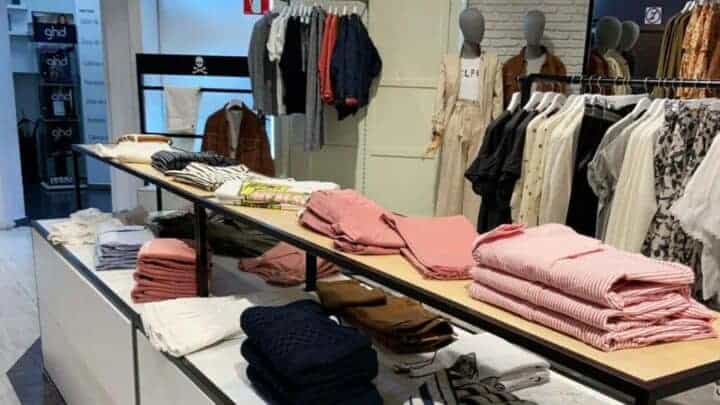

Eco-designed furniture for eco-minded people
Over the last few decades and years, consumers have not only changed their buying habits, they have also changed their way of consuming and their values when choosing what and where to buy.
An increasingly important trend, which we must take into consideration, is that of bio and eco products. These types of products have become increasingly important in the space they occupy in commercial establishments and in the lives of customers.
France, at the head of the consumption of bio products
France is one of the countries in which this trend is strongest, ranking as the second country in Europe with the highest consumption of BIO products, according to a study by FiBL and IFOAM. France’s position with respect to its neighbours is largely due to the changes that the French have made to their eating habits. In fact, two thirds of the population in this country already buy at least one organic product per month, as indicated in 2018 by the “Baromètre consommation Agence Bio / CSA Research”.
Brands and retailers are adapting to this trend by offering a greater variety of these types of products and giving them greater prominence in their spaces. However, consumers go further than that, and not only try to eat and drink responsibly, but to participate and collaborate in a responsible sales and production chain, thus making manufacturers face up to their responsibilities.
Added to this is the increasing importance that they give to their nutrition to lead a healthier lifestyle. According to a Kantar study conducted in 2016, 79% of the French agree with this, with a growth of 20 points compared to 2012. This awareness has led consumers to look for healthier, organic, natural and ecological products.
Towards an eco-designed store model
At HMY, we are developing our solutions with the eco-design in mind. For example, we are limiting the number of materials in our products, using a large part of recyclable materials, such as wood and metal. We are also developing new products as steel distributors for bulk products.
At HMY we help you to create or adapt your store to turn it into an environmentally responsible space. This does not only mean an eco-design, because sustainable development forms part of our corporate values. We support you throughout the process, from the design to the installation.
Our three factories in France and the presence of our team throughout the country means that we can guarantee a local and sustainable response and provide our customers with a quality service.
To find out more about us, please take a look at our website to see more information about our solutions.
How can the retail sector adapt to the bio boom?
Bio products are booming and the trend is expected to increase. Consumers are aspiring to more sustainable consumption and seeking products that are good for their health, environmentally friendly and fair to the producer. Proof of this is the consumption of bio products has more than doubled in Europe in the last decade and according to Baromètre consommation Agence Bio / CSA Research published in January 2018, sales of bio foods are set to triple in the coming years.
One of the countries where this trend is most pronounced is France. Three out of four French people say they consume an organic product at least once a month. They are not only buying bio products, but also changing their habits by fighting food waste and prioritising bulk, local and seasonal products.
Adapting to an eco-responsible consumer
This change in behaviour by consumers implies brands and retailers must adapt, especially if we keep in mind that approximately half of the sales of bio products are made in supermarkets.
Players in the sector have already taken measures in this regard and are taking advantage of this boom. Stores specialising in bio products are being developed, adding environmental standards and proximity to the codes of the large supermarket chains. The latter have launched the offensive in several ways, by associating or acquiring specialists or developing their own brands (Casino and Naturalia, Carrefour and Carrefour bio).
Towards a more sustainable store and purchase model
The increase in the area dedicated to bio products in stores implies changes in terms of design and store concept. Given this scenario, HMY, which shares the same concern regarding sustainability as brands and retailers, is working to provide appropriate solutions, opting for eco-conception and using recyclable and reusable materials such as metal and wood.
Sustainable shopfitting
The most successful are widening focusses far beyond their financial targets and incorporating company-wide practices that assist in achieving global, sustainable development goals.
Sustainability forms part of HMY’s commercial philosophy, and we strive to achieve environmental satisfaction for brands and retailers and their customers. When designing and developing any retail space, there are a number of key things to consider to ensure your shopfitting approach is as “green” as possible.
Firstly, thanks to advances in technology, retailers can go completely paperless – whether through offering digital receipts, as opposed to wasting paper, or incorporating digital signage into the store. HMY has developed a unique digital signage solution which allows the dissemination of promotional or commercial content in real time on store screens, enabling brands to customise content according to location and the promotional context.
Adopting technology and merging the online and offline experience in this way, means updating in-store displays is quicker and more efficient, while offering customers an enhanced and personalised customer experience.
Resourcefulness is vital for running a sustainable business and the choice of materials in retail is becoming increasingly important. Using raw and renewable materials means waste is significantly reduced. Recyclable items made from metals, woods and plastics, for example, can be turned into new products, saving the need for materials that can drain our natural resources down to dangerous levels.
As a testament to their commitment to sustainability, HMY has exclusively designed E-Bulk, the first bulk stainless steel furniture to offer its customers. This is the same price as plastic, whilst being widely recyclable and better for the environment, ultimately helping fight against food waste and overpacking, yet still very aesthetic and customisable.
Another simple way to reduce your business’ carbon footprint, is replacing traditional light bulbs with LED lighting. LEDs are known to be much more efficient as they use less energy and the low heat means there’s considerably less heat loss, which can result in wastage. These come in several models too, allowing for customisability.
Are you thinking about creating a more sustainable retail space? Get in touch today, to find out how we can help.


